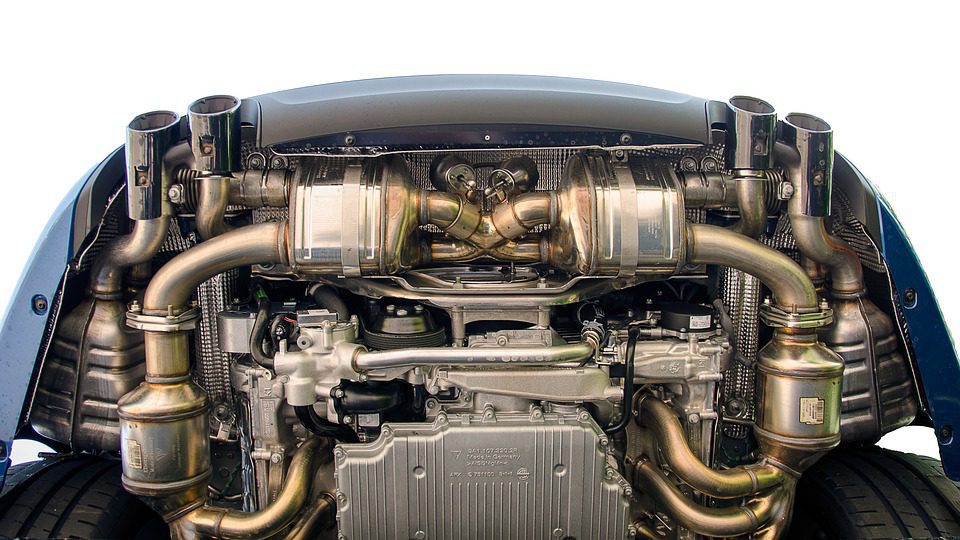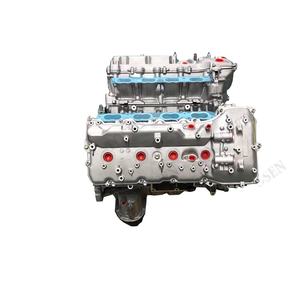Opel Corsa Engine: Top Tips for Maintenance and Treatment
Opel Corsa Engine: Top Tips for Maintenance and Treatment
Blog Article
Checking Out the Inner Functions of a Compact Automobile's Engine System
As vehicle drivers, we usually consider granted the intricate processes that occur within the boundaries of our automobile's engine system. The small yet complicated machinery that pushes us forward is a marvel of design accuracy and sychronisation. From the controlled explosions in the burning chamber to the careful timing of gas injection, every component plays a crucial duty in the smooth procedure of the engine. In this exploration of a compact lorry's engine system, we will certainly unwind the inner operations of this mechanical harmony, dropping light on the mysteries that drive us onward on our everyday journeys.
Burning Process Introduction
The combustion procedure in a compact automobile's engine system is a vital device that effectively transforms fuel right into energy to power the automobile. This procedure happens within the burning chamber of the engine, where fuel and air mix, spark, and produce controlled surges. The combustion process includes four primary phases: intake, power, exhaust, and compression.
During the consumption stage, the piston relocates downward, attracting a mixture of air and gas into the burning chamber. The next phase, compression, includes the piston moving upwards, compressing the air-fuel combination to enhance its potency. Consequently, in the power stage, the stimulate plug ignites the pressed mixture, leading to a fast expansion of gases that requires the piston back down. This down movement produces the power required to drive the car. In the exhaust phase, the scorched gases are removed from the combustion chamber with the exhaust valve, preparing the chamber for the following cycle. This cyclic combustion process is basic to the operation of a small lorry's engine system, making sure reliable energy conversion for propulsion.
Piston and Cylinder Communication

The piston's precise fit within the cyndrical tube is crucial for keeping ideal compression and avoiding energy loss throughout burning. Tight clearances between the piston and cyndrical tube wall surfaces make sure effective sealing, permitting the piston to relocate smoothly without permitting gases to leakage past. Appropriate lubrication is also essential to minimize friction and put on in between these elements, enhancing long life and performance.
Furthermore, the layout and materials used in producing the piston and cylinder influence engine effectiveness and resilience. Modern engines often use light-weight yet durable products like aluminum alloys for pistons and cyndrical tube liners to lower inertia and improve thermal performance. Generally, the harmonious interaction in between the piston and cylinder is basic to the engine's performance and total performance.
Fuel Injection System Capability
Fuel shot systems in portable automobile engines play a critical role in precisely delivering gas to the burning chamber for efficient and regulated ignition. The fuel shot system Read Full Article functions by injecting gas right into the combustion chamber at the optimal minute during the engine's operation (opel corsa engine). This specific timing ensures that the fuel blends equally with the air for proper combustion, causing boosted fuel efficiency and minimized exhausts
There are primarily two types of fuel injection systems utilized in portable lorry engines: port fuel injection (PFI) and direct fuel injection (DFI) PFI systems inject fuel into the intake port before the intake valve, while DFI systems inject fuel directly into the combustion chamber. Both systems have their benefits, with DFI using far better gas atomization and PFI giving an extra cost-effective solution.
Understanding Engine Cooling Mechanisms
Reliable operation of a small vehicle's engine depends greatly on the effectiveness of its cooling devices. The cooling system in a small lorry usually is composed of several elements functioning together to control the engine temperature level. Understanding these engine cooling devices is vital for preserving the efficiency and long life of a compact car's engine system.

Exhaust System Parts Explained
The optimum performance of a small car's engine cooling mechanisms depends on a complementary system recognized as the exhaust system, which consists of numerous necessary elements for making sure effective emissions and engine performance. The exhaust manifold accumulates exhaust gases from the engine's routes and cyndrical tubes them to the catalytic converter.
One critical element of the exhaust system is the oxygen sensor, which monitors the oxygen degrees in the exhaust gases to discover this assist regulate fuel consumption and ensure optimum engine performance. opel corsa engine. Additionally, the resonator might be present in some exhaust systems to reduce sound levels. On the whole, the exhaust system plays a crucial function in keeping engine effectiveness, decreasing harmful discharges, and guaranteeing a quieter driving experience for portable car owners

Conclusion
Finally, the compact lorry's engine system is an intricate combination of elements that collaborate to promote the combustion procedure, transform fuel into power, and expel waste gases. Recognizing the inner workings of the engine system, consisting of the piston and cylinder communication, fuel shot system, engine cooling devices, and exhaust system components, is essential for preserving ideal efficiency and effectiveness of the lorry.
The combustion process in a small lorry's engine system is an important device that efficiently converts this post fuel right into power to power the lorry.Fuel injection systems in compact automobile engines play an essential role in precisely providing fuel to the combustion chamber for regulated and reliable ignition.There are largely two types of fuel injection systems used in small car engines: port fuel injection (PFI) and direct fuel injection (DFI) Understanding these engine cooling mechanisms is important for preserving the performance and longevity of a compact vehicle's engine system.
The optimal functioning of a compact vehicle's engine air conditioning devices depends on a corresponding system recognized as the exhaust system, which makes up different necessary elements for making sure effective emissions and engine performance.
Report this page